
When it comes to marketing channels, SaaS brands are spoiled for choice.
Webinars. In-person events. How-to videos and live demos.
And that doesn’t even scratch the surface of how modern companies win and convert leads.
This begs the question: does old-fashioned blogging still make sense for SaaS companies in 2021 and beyond?
The short answer is a resounding “Yes.”
Don’t just take my word for it, though.
Let’s take a look at some real-world examples and data that highlights how a blog can be one of the best marketing channels for SaaS.
For starters, all top SaaS companies are already blogging.
Simply put, you’d be hard-pressed to find a top SaaS company that isn’t regularly writing content.
Take a peek at the SaaS 1000 or the Cloud 100. Household names and up-and-comers alike are putting together how-to guides, leadership posts and much more on a weekly basis.
The takeaway? Blogging is an expectation, not an exception to the rule.
Of course, SaaS companies shouldn’t pour energy and resources into their blog “just because.”
What’s the incentive, then?
Blogs serve as a brilliant place to position your company and colleagues as being informed and hip to hot takes in your industry.
For example, Moz’s blog regularly weighs in on the state of SEO and isn’t afraid to get opinionated in the process.
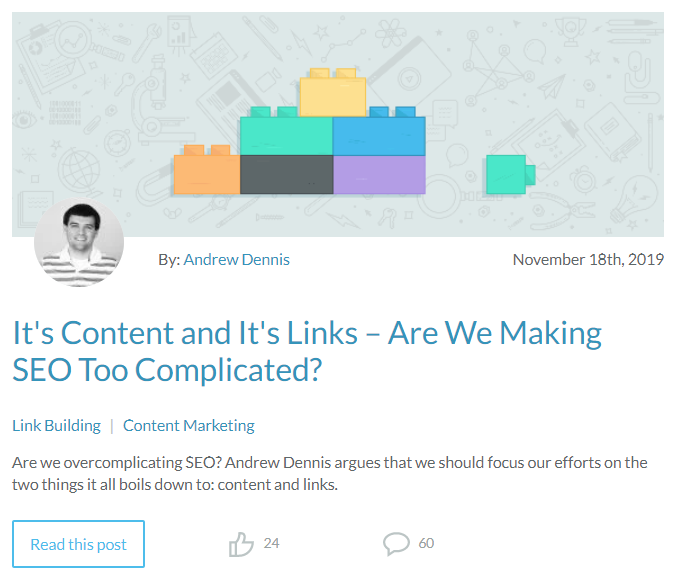
Many of the best SaaS blogs likewise target relevant keywords while also flexing their industry insight and influence. Check out how the Salesforce blog manages to do both, with the latter post already ranking in Google for “messaging program.”
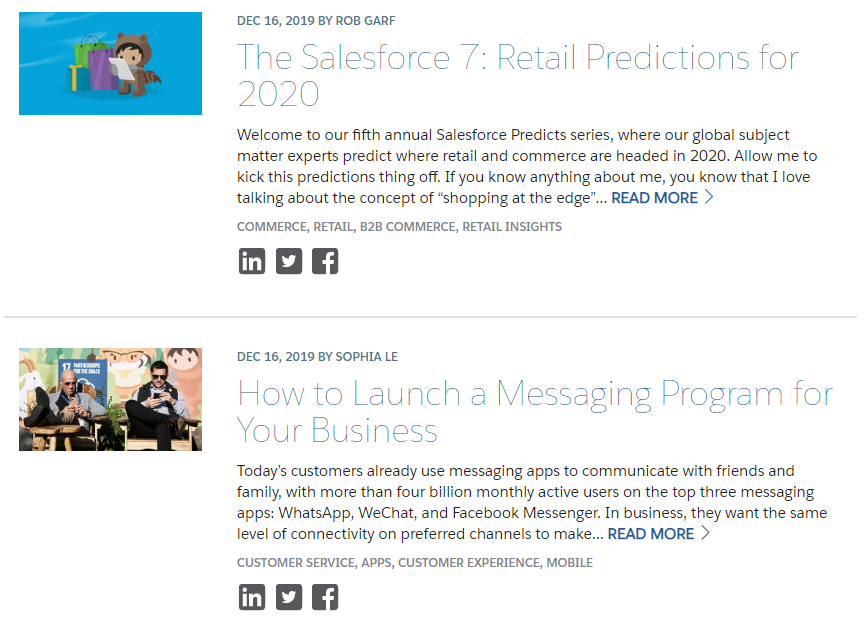
A skilled SaaS writer can do double duty of crafting compelling content while also attacking relevant keywords that attract new customers via search.
And hey, that actually leads us to our next point.
SaaS companies rely on organic traffic for new visitors and leads.
Although new marketing channels for SaaS might be emerging, the need for traffic isn’t going anywhere.
As highlighted by research conducted by Mike Sonders, organic search traffic remains one of the largest and most valuable sources of traffic for the top SaaS companies.
In some cases, organic traffic can account for up to 68% of all traffic to a company’s site.
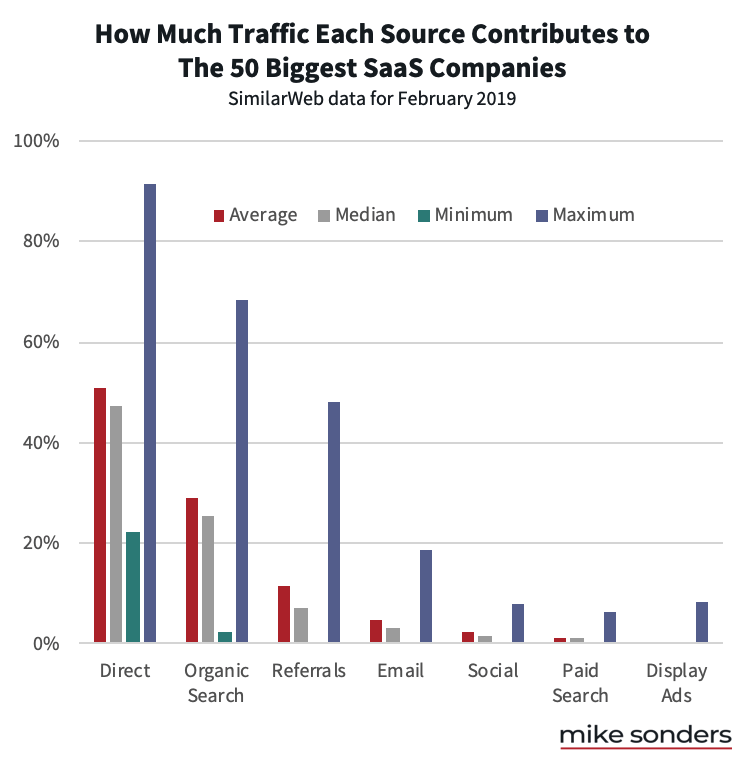
The study also highlights how “direct” traffic is misleading and why SaaS companies can’t afford to ignore their presence on Google.
If you haven’t already, go read it. Seriously.
The importance of organic traffic for SaaS makes perfect sense, especially when you think about product positioning.
Consider how many email marketing services are out there. Too many to count, right?
But how many of them are specifically targeting agencies? Which ones are going after individuals versus small business owners or mid-sized companies?
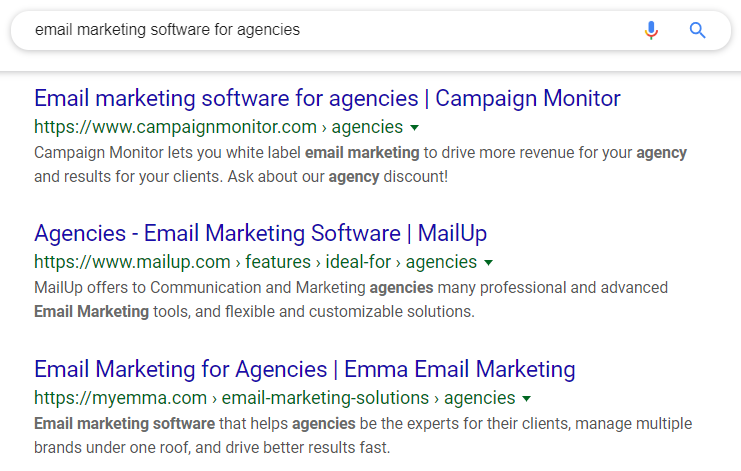
The ability to hone in on this specific sort of search intent via blogging is a big deal in terms of business.
Because given that the #1 result gets the lion’s share of clicks based on what we know about organic click-through rates, snagging those top spots is a smart move.
Blogs allow you to repurpose and recycle your marketing content.
Sounds like a mouthful, right? Let’s break it down.
Running a SaaS blog is about more than just producing blog posts.
Consider how blogs can be used to host and highlight promotional content such as:
- White papers
- Webinars
- Videos
- Newsletters
- Tutorials for your knowledge base
- Infographics
- Case studies
And on the flip side, blog content can be used to supplement other marketing channels for SaaS beyond your blog itself.
If you’re active on social media, promoting your blog content via LinkedIn and Twitter is a no-brainer.
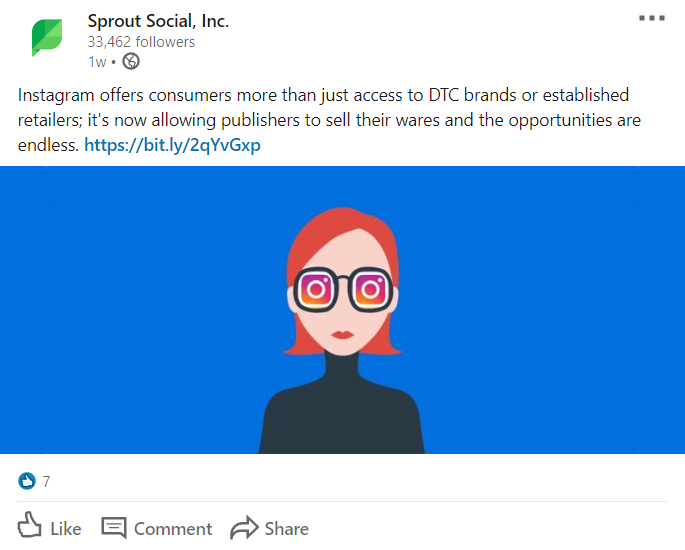
That’s just the beginning of what you can do with your blog content, by the way.
Want a script for a marketing video? Look no further than your latest post.
Need fresh content to promote to your email list? That’s what your blog is for.

See how that works?
Listen: if you’re investing in SaaS content creation, you shouldn’t look at a blog post as a matter of “one and done.”
This is especially true given the time and legwork required to research and produce a quality blog.
With a bit of creativity, you can stretch a single post across multiple mediums time and time again.
Blogs posts are capable of reaching people at any point in the customer journey.
It’s no secret that SaaS companies at large are stepping up their content creation and marketing efforts.
However, companies are rightfully paying more attention to specific audiences rather than creating one-size-fits-all content.
Recent research shows that 51% of digital marketers are prioritizing customized content that serves the customer journey.
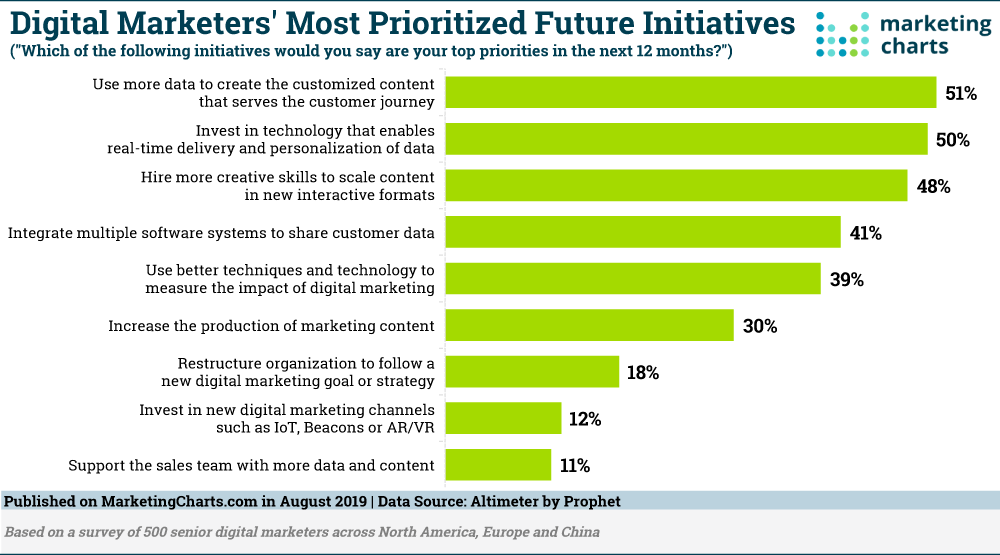
Couple this with the fact that 62% of consumers are conducting independent research on a product before making a purchase according to a 2019 report from Gartner.
The same study notes that the majority of consumers feel overwhelmed when trying to read up on a product. Many likewise struggle with the information that they find.
Translation? SaaS companies need to be able to speak to people at varying levels of awareness when it comes to what they’re selling.
Whether someone’s problem-aware, product-aware or anywhere in-between, a blog post is capable of filling in the gaps to move that person toward becoming a full-fledged customer.
For example, this Datadog blog post breaking down root cause analysis obviously speaks to someone with technical know-how and a working knowledge of data analysis. These folks are likely ready to buy and are far beyond the “just browsing” phase.
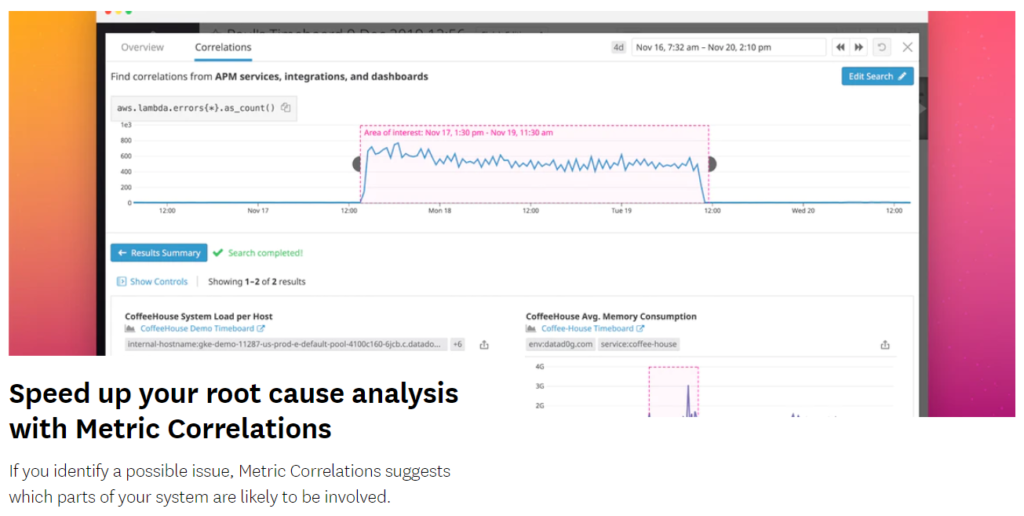
Meanwhile, this post from SuperOffice is a shining example of top-of-funnel content for someone who needs an introduction to productivity software and the potential solutions available to them.
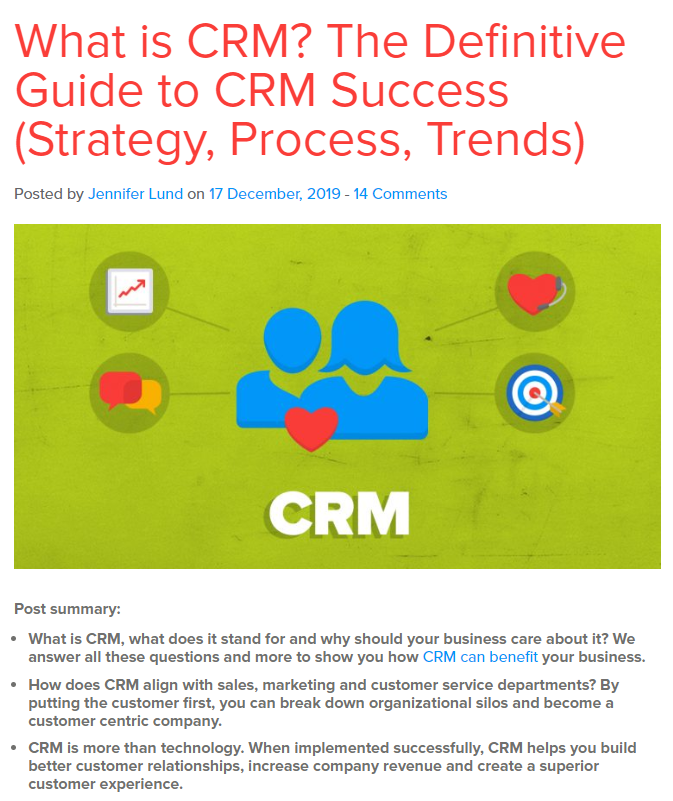
SaaS blogs posts can cover a combination of broad topics (hint: “What is CRM?” or “What is Social Media Management?”) and specific, product-related questions (“How to Create a CRM in Google Sheets” or “How to Create a Social Media Marketing Calendar”) to maximize audience reach.
A combination of keyword research and actual customer conversations can clue companies in on what they should be talking about.
And regardless, a blog allows brands to cover all of the above.
Which marketing channels for SaaS do you believe are the most important?
Sure, blog posts might not seem like breaking news.
That said, the importance of blogging for SaaS is well-documented.
From organic search performance to product positioning and beyond, companies can’t afford to let their blogs gather cobwebs.
Where do you think a blog lies in terms of marketing priorities, though? Can a SaaS company truly get away with not blogging these days?
Let me know in the comments or yell at me on Twitter (@brentwrites).
This post was last updated on 1/6/2020.
As a marketing analys and wannabe blogger I find this piece to be extremely insightful
As a marketing analyst and blogger I do feel blogging is extremely under-utilised.
As a blogger i agree that they are extremely helpful and deeply under utilised